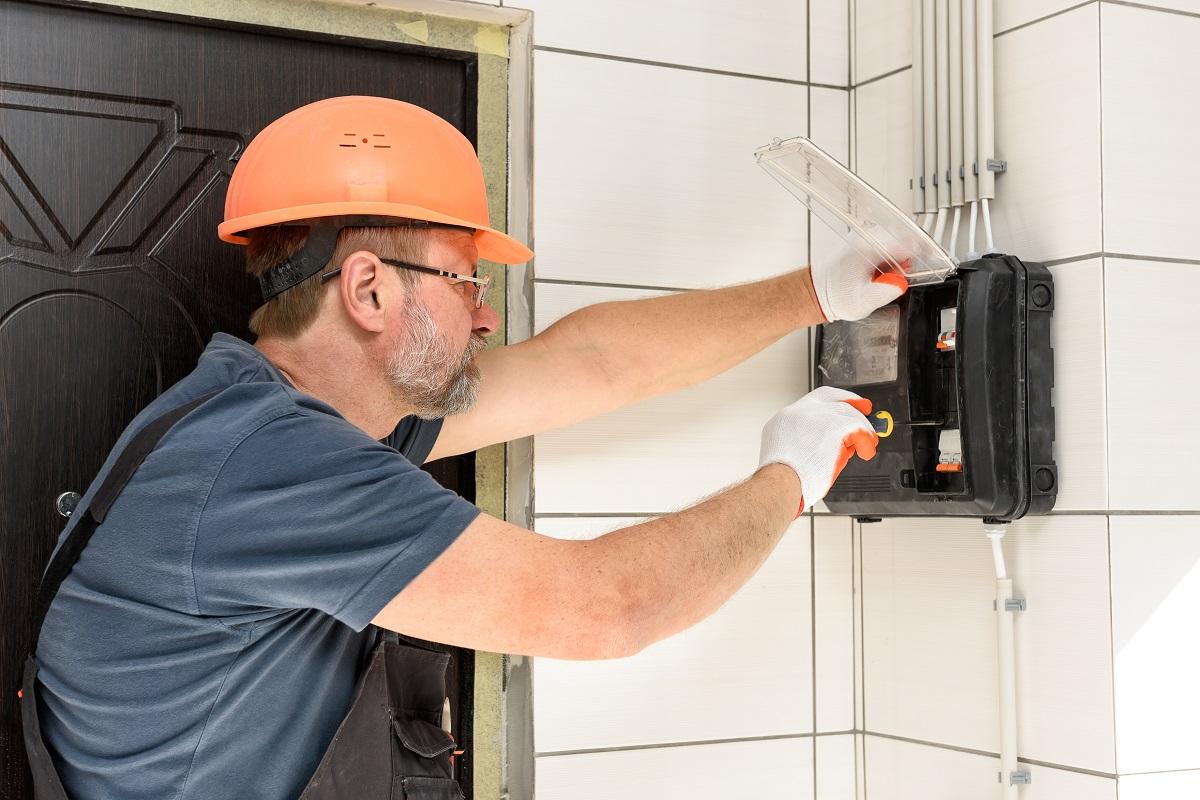6 Steps to Determining your Electrical Service Size

A message from your local electrical company in Orlando
Your home’s electrical service size is directly responsible for determining the power and efficiency of your home’s electrical distribution system. In layman’s terms, it indicates how many appliances, lights, or other electrical devices you can operate simultaneously. Several years ago, a standard electrical service size of 100 amps provided enough electrical current to operate any devices the average home would use. Nowadays, many homes draw a lot more current than their service size allows for. Many homes now contain a large number of appliances, technology devices, and luxuries (such as spas and pools) that electrical contractors and homeowners could have never previously anticipated. As a result, it’s more important than ever to make certain your electrical service size is capable of supplying power to the devices in use in the home.
If you know what you’re looking for, it’s relatively easy (and only take a few minutes) to determine your home’s electrical service size. In this article we’ll tell you how to do just that, in 6 simple, easy-to-follow steps. To size your electrical service, you’ll need access to the main components of your house's electrical distribution system -- the wire, the conduit, the meter, the panel and the main breaker -- to identify which has the lowest amperage rating. Its rating is your overall home's electric service rating.
-
Measure the diameter of the conduit that houses the service cable entry. This conduit houses the cable that comes from the electric company and enters the power meter box. Depending on whether your electricity is provided from underground or above ground, the conduit will enter the meter box from the top or the bottom. Many times the conduit is oversized, so measuring it is sometimes not a true indicator of the wiring it houses, but it’s a good start toward determining the service size. The following list indicates common conduit sizes and their associated service sizes; based on the gauge of electrical wire they’re capable of housing.
- 1-inch conduit is capable of housing 6 gauge wire, supplying 60 amp service
- 1 ¼-inch conduit is capable of housing 4 gauge wire, supplying 100 amp service
- 2-inch conduit is capable of housing larger gauge wire, capable of supplying over 100 amp service
-
Visually inspect and estimate the size of the main service cable, if possible. The list below indicates the typical width of the cabling and the amps it is capable of supplying:
- 60 ampere capacity cables are between 3/4 inch and 7/8 inch wide
- 100 ampere capacity cables are approximately 1 inch wide
- 150 ampere capacity cables are approximately 1-1/4 inches wide
- 200 ampere capacity cables are typically 1 and 1/2 inch wide.
- Inspect the outside of the power meter box. There may be an amperage rating listed on a label affixed to the power meter.
- Inspect your electrical panel to determine if it has a label on it indicating its amperage rating. If this is the case, the label will usually be affixed inside the panel door and may have been affixed either by the manufacturer or an electrician or inspector during initial installation or afterward.
- Check your panel for a main disconnect. Most modern electrical service panels will be equipped with one. This main breaker will likely be the largest breaker in the panel. It will usually be labelled as the “main” and will indicate the capacity as 100A, 150A, or 200A.
- Compare the information you find during the previous inspection steps, find the lowest value, and you should be able to find your home’s electrical service size.
Spectrum Electric is a top Central Florida provider of electrical service and panel upgrades and replacements. We handle any and all core electrical services, both residential and commercial.
